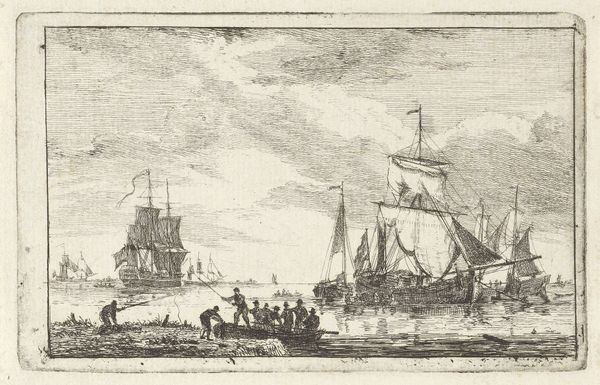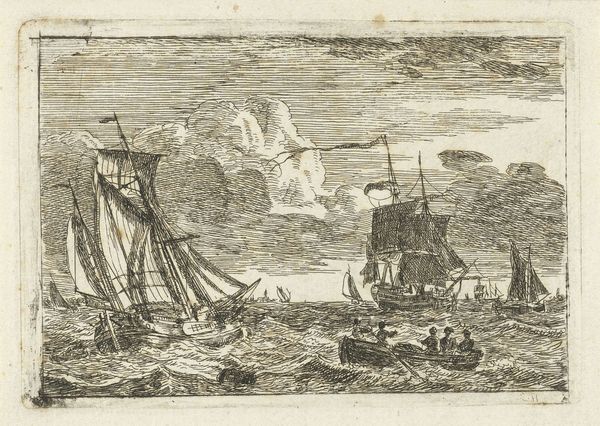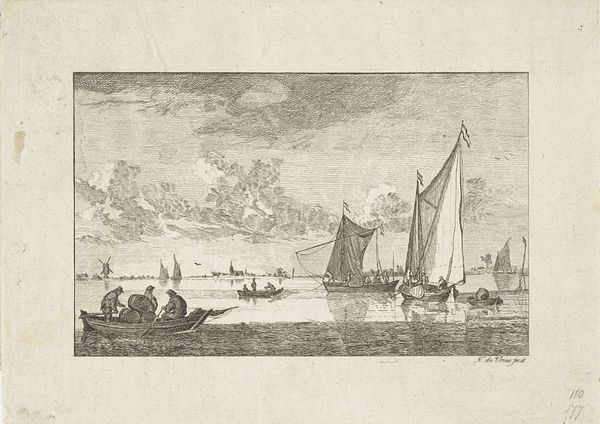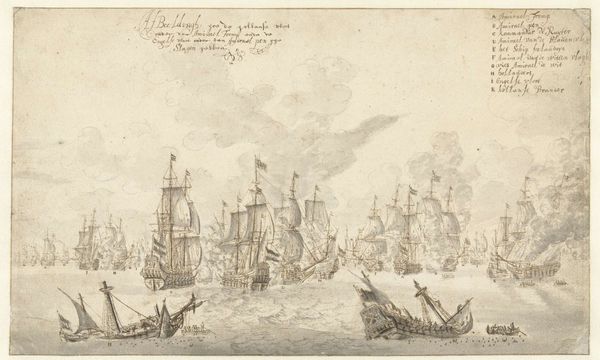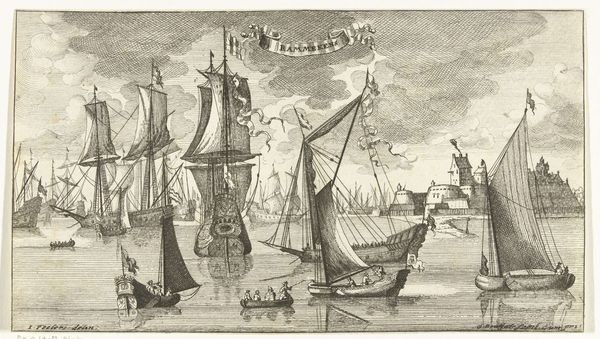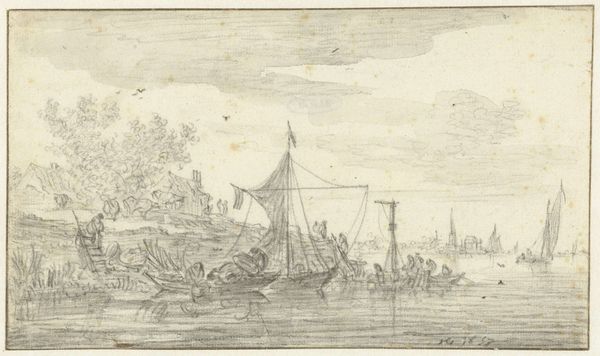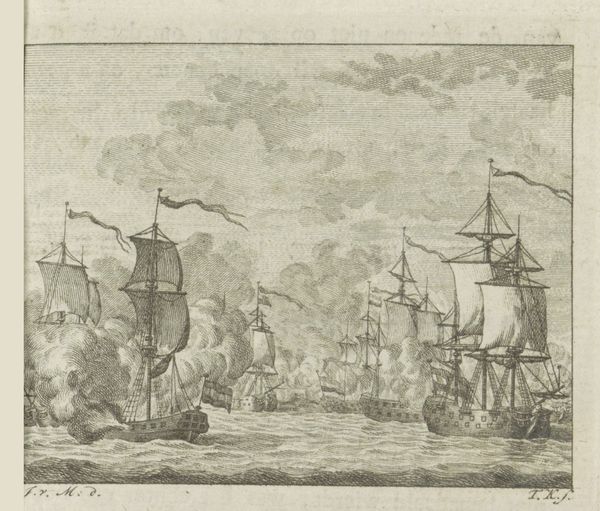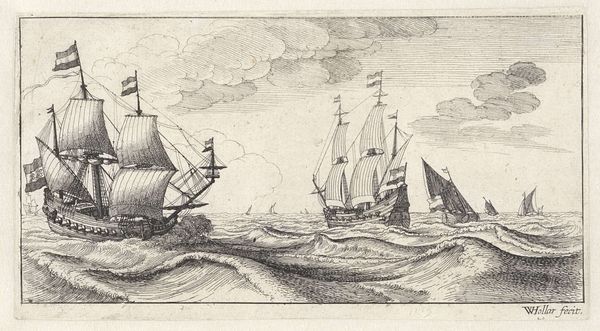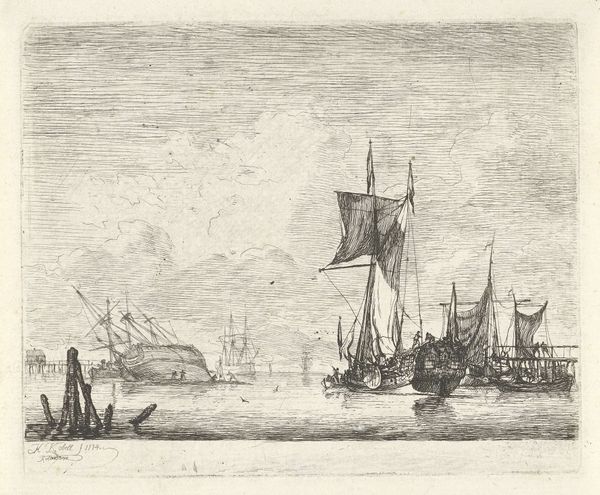
print, engraving
#
baroque
# print
#
old engraving style
#
line
#
cityscape
#
history-painting
#
engraving
Dimensions: height 33 mm, width 80 mm
Copyright: Rijks Museum: Open Domain
Editor: This is a print of "The Naval Battle of Gibraltar, 1607" by Simon Fokke, made sometime between 1722 and 1784. It looks incredibly chaotic! There are ships everywhere amidst a flurry of smoke and explosions. What strikes you about this piece? Curator: What I see here is more than just a depiction of naval conflict; it is a visualization of the power dynamics at play during that historical period. Think about who is commissioning and consuming these images. This isn't neutral documentation; it’s about constructing and reinforcing particular narratives of national identity and maritime supremacy. What stories about Dutch power are being told, and whose voices are being excluded from this telling? Editor: That's interesting. I hadn't really thought about the perspective of the engraver and how the piece served Dutch interests. Are there any visual cues to suggest that? Curator: Consider the vantage point. We, the viewers, are positioned to witness the battle unfold. Also, note the details emphasized and those omitted. Think about what gets highlighted in depictions of warfare, and what remains obscured or sanitized. For instance, where are the sailors and enslaved people on these ships represented? Are we seeing the consequences of these battles? The romantic depiction normalizes and almost glorifies it. Editor: I see what you mean. The focus seems entirely on the ships and the grandeur of the battle, rather than any human cost. It's like propaganda almost? Curator: Exactly! The artist's choices reflect specific cultural and political agendas of the time. Understanding that helps us look critically at how historical events are framed and remembered – or, perhaps more importantly, forgotten. It encourages us to think critically about who benefits from these narratives, and whose struggles are rendered invisible. Editor: I hadn't considered that, thanks for highlighting that! It completely changes my perspective on this seemingly simple historical print. Curator: Art, like any other cultural product, is always embedded in webs of power relations.
Comments
No comments
Be the first to comment and join the conversation on the ultimate creative platform.


